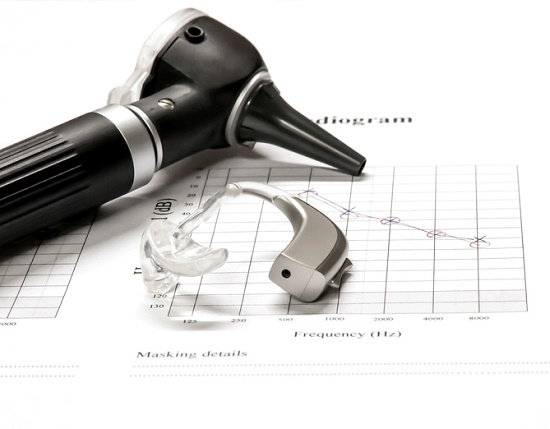
Are you looking into investing in hearing aids?
If so, it can seem intimidating at first. There are several choices available, and the confusing terminology doesn’t help.
That’s why we’re going to clarify the most common and important terms, so when you talk with your hearing professional you’ll be prepared to find the ideal hearing aid for you.
Hearing loss and testing
High-frequency hearing loss – this is the most common form of hearing loss. Patients with high-frequency hearing loss have the greatest trouble hearing higher frequency sounds, such as the sounds of speech.
Sensorineural hearing loss – this type of hearing loss comes about when there is damage to the nerve cells of the inner ear. This is the most common type of permanent hearing loss caused by direct exposure to loud noise, the aging process, genetics, or other health problems.
Bilateral hearing loss – hearing loss in both ears, which could be symmetrical (the same degree of loss in both ears) or asymmetrical (varied degrees of loss in each ear). Bilateral hearing loss is in most cases best treated with two hearing aids.
Audiogram – the chart which provides a visual depiction of your hearing assessment results. The vertical axis measures decibels (volume) and the horizontal axis measures frequencies (pitch). The hearing consultant captures the lowest decibel level you are able to hear at each frequency. If you need higher volumes to hear higher frequencies, your audiogram will show a pattern of high-frequency hearing loss.
Decibel (dB) – the unit used to measure sound level or intensity. Regular conversation registers at about 60 decibels, and prolonged direct exposure to any sound over 80 decibels could result in permanent hearing loss. Seeing as the scale is logarithmic, an increase of 6-10 decibels doubles the volume of the sound.
Frequency – represents pitch as measured in hertz. Think of moving up the keys on a piano, from left to right (low-frequency/pitch to high-frequency/pitch).
Threshold of hearing – The lowest decibel level that can be heard at each frequency.
Degree of hearing loss – Hearing loss is generally classed as mild (26-40 dB loss), moderate (41-55), severe (71-90), or profound (91+).
Tinnitus – a relentless ringing or buzzing in the ears when no external sound is present. Frequently a sign of hearing damage or loss.
Hearing aid styles
Digital hearing aid – hearing aids that include a digital microchip, utilized to custom-program the hearing aids to accommodate each individual’s distinctive hearing loss.
Hearing aid style – the type of hearing aid characterized by its size and location in relation to the ear. Core styles consist of behind-the-ear, in-the-ear, and in-the-canal.
Behind the ear (BTE) hearing aids – the majority of hearing aid parts are enclosed within a case that is placed behind the ear, attached to an earmold by a clear plastic tube. Mini-BTE hearing aids are also available.
In the ear (ITE) hearing aids – the hearing aid parts are enclosed inside of a case that fits in the outside part of the ear.
In the canal (ITC) hearing aids – the hearing aid components are contained in a case that fits within the ear canal. Completely-in-the-canal (CIC) hearing aids are also obtainable that are nearly invisible when worn.
Hearing aid parts
Earmold – a piece of plastic, acrylic, or other soft material that is molded to the curves of the individual’s ears, utilized for the fitting of hearing aids.
Microphone – the hearing aid part that picks up external sound and converts the sound waves into an electrical signal.
Digital signal processor – a specialized microprocessor within a hearing aid that can manipulate and enhance sound.
Amplifier – the part of the hearing aid that boosts the volume of sound.
Speaker – the hearing aid part that delivers the enhanced sound to the ear.
Wireless antenna – available in specific hearing aids, enabling wireless connection to compatible equipment such as phones and music players.
Hearing aid advanced features
Variable programming – hearing aid programming that allows the user to change sound settings depending on the environment (e.g. at home versus in a congested restaurant).
Directional microphones – microphones that can focus on sound coming from a specific location while minimizing background noise.
Telecoils – a coil installed within the hearing aid that enables it to connect to wireless signals emanating from telephones, assistive listening devices, and hearing loops installed in public venues.
Noise reduction – functionality that assists the hearing aid to distinguish speech sounds from background noise, resulting in the enhancement of speech and the inhibition of distracting noise.
Bluetooth technology – permits the hearing aid to communicate wirelessly with a variety of devices, including cell phones, computers, MP3 players, and other compatible devices.
Uncertain of which features you need, or which you could live without? Let us help you discover the best hearing aid for your distinct needs. Call us today!